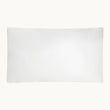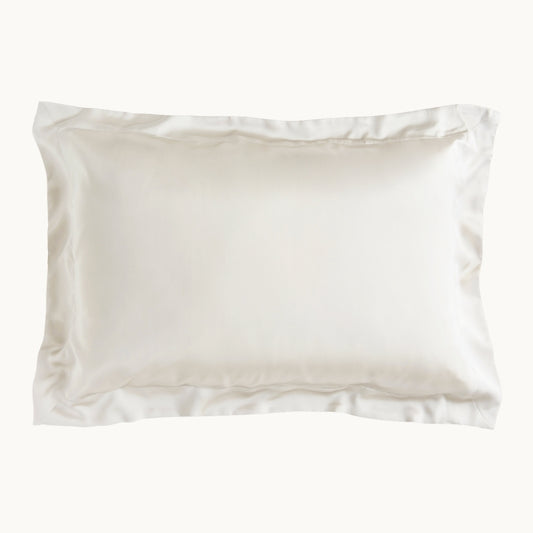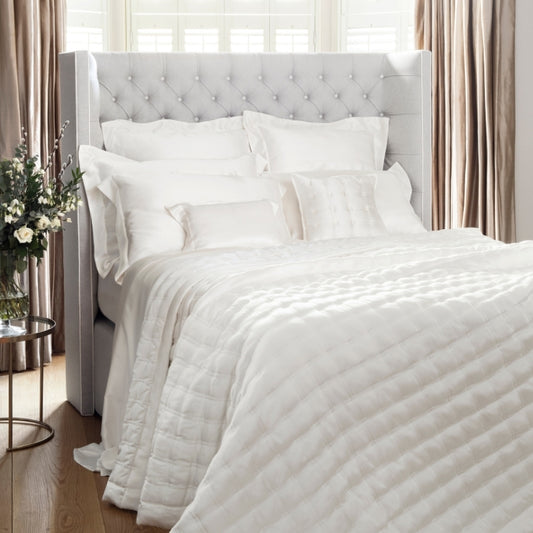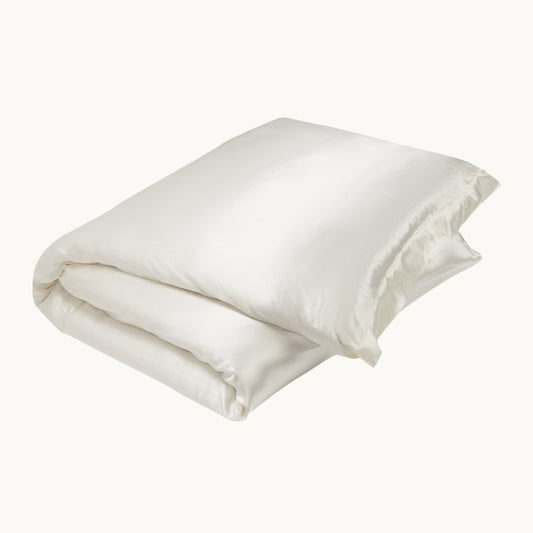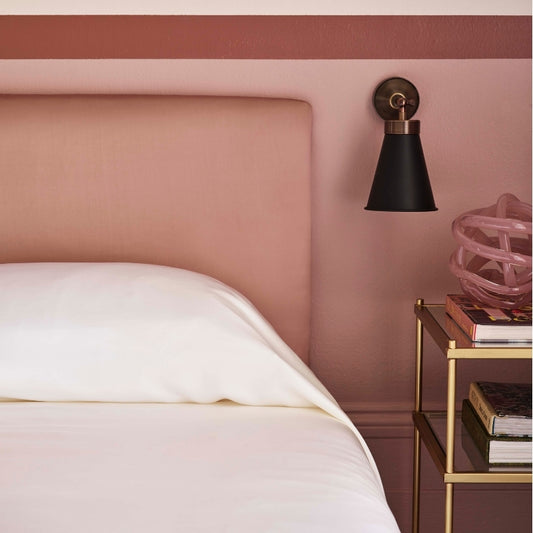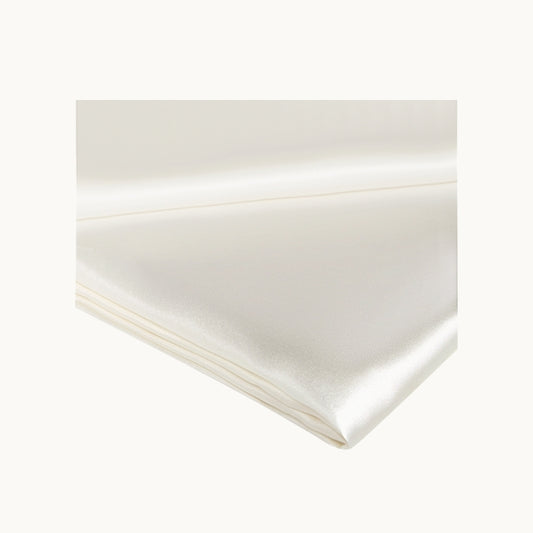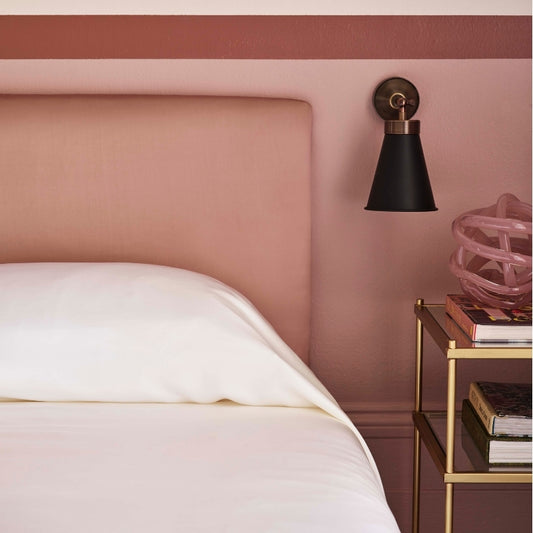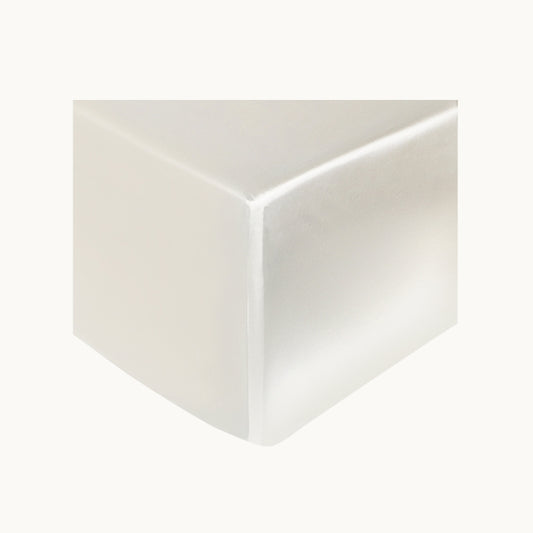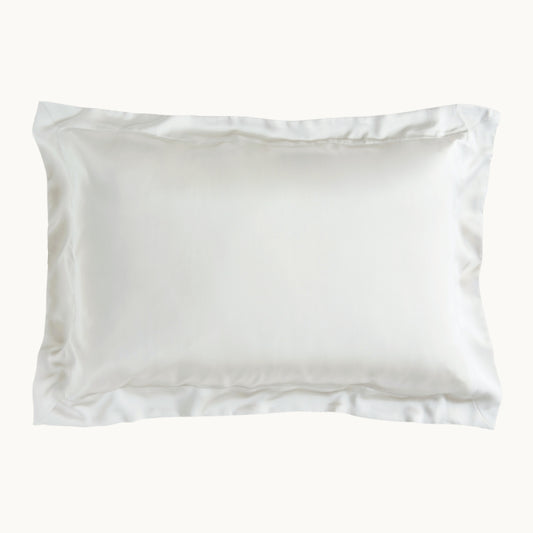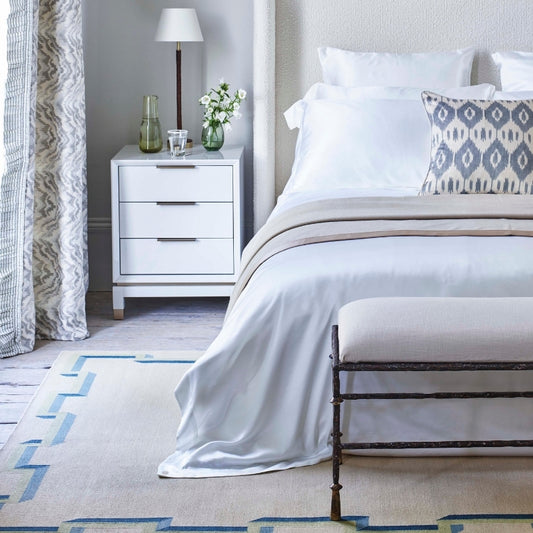One of the most popular ways of laying out and decorating interior spaces, feng shui prioritises the abstract elements of spirituality and the flow of energy to create a sense of harmony between the environment and those who exist within it. Perfect for bedrooms in particular, designing your space according to feng shui rules, layouts and colours can help you achieve a deeper sense of peace both when awake and in sleep.
If you’re considering utilising this ancient method of design to create harmony in your own home, we at Gingerlily can be of help. In this post, we will share with you the incredible history of feng shui, the principles on which it was built and how you can implement it yourself by following basic feng shui rules and colour meanings.
What exactly is feng shui?
The first, and perhaps most important, question to ask before you begin rearranging and redecorating your home is ‘what is feng shui?’ While you may have heard the name before, read about it in passing or even learned that its translation in English is ‘wind-water’, those who understand the main principles of the interior design method are few and far between. Fortunately, learning the basics is an easy process.
At its core, feng shui is an ancient Chinese philosophy based on the notion of creating harmony between yourself, your environment and your life. When used in architecture and interior design, feng shui can become an aspirational practice, a tool by which you can manipulate the energy around you to flow in line with your personal life goals, helping to achieve a state of wellbeing that is conducive to your successes in life, body and spirit.
In a more concrete sense, feng shui is practiced by changing the placements of objects, the colour schemes chosen and the textures used in a room in order to better aid the flow of energy through the space. While the basic rules of feng shui are best employed throughout the entire home, we’ll be focusing on the application of feng shui specifically within the bedroom.
“The bedroom is important because that’s where you spend a third of your life. It’s also where you go to restore your qi, so it is very much connected to your health, well-being, and relationships!” - Denise O’Dwyer, Feng Shui Consultant
What are the rules of feng shui?
A highly personal and intricate system of design, there are very few feng shui rules that won’t be bent or altered according to the space available, as well as the personal aspirations of the individual. Despite this though, there are some basic feng shui rules that we can introduce you to in order to create a more harmonious bedroom.
Positional and organisational rules of feng shui
One of the most commonly known feng shui bedroom layout rules is the placement of the bed in the command position. A symbol for personal health, rest and wellbeing, allowing the bed to occupy the commanding position in your feng shui bedroom will maximise the flow of energy towards the bagua area of health, heightening the restorative power of sleep.
The command position exists on a qi powerline of sorts and represents the place that the energy of the room is naturally channelled towards. This place can be found by starting at the door, also known as the ‘mouth of qi’, and following the energy lines diagonally across the space. Once the bed is in this commanding position, you can test the placement by sitting with your back against the headboard, which should be up against the wall. If the placement is correct, you should be able to see the door without being directly in line with it.
For bedrooms with unusual layouts and small rooms in which there are very few spaces large enough to accommodate a bed, manipulating lines of sight with a mirror is a great way to create the illusion of the commanding space. This would require a mirror being placed against a wall and carefully positioned to ensure an indirect line of sight to the door is created when sitting in the bed.
Smaller, additional feng shui furniture position rules do also exist, but it is the commanding position that is the most important to follow in any bedroom space. Once this has been prioritised, you can move on to follow additional feng shui rules, such as the following:
- Make an effort to avoid positioning your bed underneath a window. Especially important for feng shui bedrooms located on the ground floor of the home, following this rule can help increase subconscious feelings of safety and comfort while also protecting the flow of energy around the bed.
- If you have the space to do so, try to position the bed with free space on either side. Not only will this allow for the next rule to be followed, but it will also allow energy to encircle you as you sleep, moving freely around each edge of the bed.
- Particularly important for beds shared by couples, creating symmetry through the addition of two equally-sized end tables with matching lamps, and by having an equal number of pillows on either side of the bed, will help to foster harmonious and equal energy for each person, helping to support the relationship.
-
Reduce clutter wherever you can as these items can restrict and interrupt the flow of energy. In a bedroom, this is most important for the space underneath the bed which should remain completely clear to enable energy to curve gracefully around, over and underneath the bed. If lack of space and storage makes this impossible, try to organise your room so that sharp, heavy objects such as shoes and boxes are kept away from the bed, with that space instead used to store soft furnishings, additional bedding and clothing.
- “Make sure nothing is blocking the entrance to the room on the inside or outside of your bedroom door.” - Denise O’Dwyer. This means keeping furniture items such as dressers and wardrobes away from the entryway and ensuring the floor space remains clear of clutter.
By following these feng shui bedroom layout rules, you will have access to two main benefits. The first focuses on the body; by organising your bedroom furniture in a way that minimises clutter and keeps the bed away from the door and any windows, you naturally create a feeling of safety which helps to promote a calm, comfortable space for you to release your hold on consciousness in. The second benefit takes a more spiritual, symbolic approach; by placing your bed in the commanding position, you maintain sight of the door which, in feng shui philosophy, is symbolic of the future. If you can’t see the door from the bed, this can symbolise an avoidance of the future and an unhealthy lingering in the past.
The bagua map of feng shui
Translating to ‘eight areas’ in English, the bagua in feng shui are most often shown in the form of a map, the purpose of which is to provide an energy guide. Capable of evaluating your current energy fields, feng shui consultants use the map to manipulate the energy in your home to create a more harmonious, nourishing space. More than this, the bagua also each align with a range of additional elements including colours, shapes, seasons and more.

Zhen - Family
-
Symbolises: Family and new beginnings
-
Bagua colours: Greens and blues
-
Season: Spring
-
Element: Yang wood
Xun - Wealth
-
Symbolises: Wealth and abundance
-
Bagua colours: Purples
-
Season: Spring
-
Element: Yin Wood
Tai Qi - Health
-
Symbolises: Wellness and the centre
-
Bagua colours: Earthy browns, oranges and yellows
-
Season: Transitional
-
Element: Earth
Qian - Helpful People
-
Symbolises: Helpful People, the father and travel
-
Bagua colours: Greys and metallics
-
Season: Autumn
-
Element: Yang metal
Dui - Children
-
Symbolises: Children and creativity
-
Bagua colours: Whites and metallics
-
Season: Autumn
-
Element: Yin metal
Gen - Knowledge
-
Symbolises: Knowledge, skillfulness and spirituality
-
Bagua colours: Dark blues and navy
-
Season: Transitional
-
Element: Yang earth
Li - Fame
-
Symbolises: Fame, recognition and passion
-
Bagua colours: Reds
-
Season: Summer
-
Element: Fire
Kan - Career
-
Symbolises: Career and the chosen path
-
Bagua colours: Blacks
-
Season: Winter
-
Element: Water
Kun - Partnerships
-
Symbolises: Relationships and marriage
-
Bagua colours: Pinks
-
Season: Transitional
-
Element: Yin earth
When optimising your bedroom according to the principles of feng shui, the traditional approach is to separate your room into the bagua areas, using the compass points to assign the north, east, south, west and midpoints to each of the outer sections, with the centre point of the room being taken by the ‘Tai Qi’ wellness section of the bagua map. The space is then activated by increasing the flow of energy through the room by adding plants, decorating with bagua colours, moving furniture and spending more time there.
The best colours for bedroom feng shui
When creating a bedroom which follows the principles of feng shui interior design and utilises bagua colours, it's important to try follow Design Director Rachael Kilby-Tyre’s advice and “keep colours soft and avoid intense shades in high proportions” as they can disrupt or overstimulate the room’s natural energy. The purpose of the room is to sleep, so maintaining a soft, gentle energy that doesn’t move too rapidly is important, and the easiest way to achieve this is to first choose a neutral base colour to begin building your feng shui colour scheme.
This colour should take up the majority of the space, so selecting a plain wallpaper or painting walls in soothing tones of beige or soft browns is the first step to fostering a calm, restorative environment. Next, you can begin building on your feng shui colour scheme through smaller additions such as paintings, rugs, decorative crystals and candles and, for the focal point of the room, bed linen.
When it comes to selecting which colours to use for these additional furnishings, you have the opportunity to tailor your bedroom to your personal preferences and aspirations using the bagua areas. Of course, some rooms correspond more closely to bagua areas than others and it’s common for the bedroom, the purpose of which is to rejuvenate the body and rest the mind, to be associated most strongly with the bagua area of wellness (Tai Qi). If you were to follow this and utilise the feng shui colours associated with this bagua area, your room would be peppered with rich, earthy colours of browns, oranges and yellows. However, it's still important to know that you can opt for different bagua areas to guide your colour scheme if your focus for your bedroom and life lies somewhere else.
Feng shui bedding
The centre of energy in any bedroom, selecting feng shui bedding for your bed will help to complete the feeling of harmony that this practice strives for. Colour is, of course, one of the most important considerations to make when selecting your choices, but true feng shui bedding should also be made from organic, non-toxic materials in order to protect the natural energies. Because of this, we would recommend avoiding cheaper materials such as satin or polyester mixes and instead opt for naturally produced silk bedding.
To help you begin your journey to finding and designing the perfect feng shui bedding for your space, we’ve put together three suggestions drawing inspiration from the bagua energy map colours.
Family and children bagua colours

Perfect for couples who are looking to conceive a child and create their own new beginning, this feng shui bedding set mixes the soft, blue tones of the family and new beginnings bagua (Zhen) with the clean whites of the children and creativity bagua (Dui).
This style is finished with the addition of the Windsor silk bedspread and throw pillows which helps to follow our design director, Rachael Kilby-Tyre’s, feng shui advice to “try and incorporate lots of textures into your room to add depth and interest. Choose quality bed linen and textured bed throws to make the room feel luxurious and indulgent.”
Knowledge and career bagua colours

If your aspirations focus more heavily on career progression (Kan), knowledge acquisition and self-cultivation (Gen), then designing feng shui bedding based on the bagua colours of black and dark blue may be a better choice for you. As these colours are dark and quite heavy, we would recommend only choosing them if your room has plenty of natural light as this will be reflected by the silk material, helping to keep the space feeling light and bright.
Health and partnerships bagua colours

A beautiful pairing both in terms of bagua colours and their meanings, creating a bedroom which balances the areas of wellness (Tai Qi) and partnership (Kun) can help to create a calming, nourishing space for you and your partner. We’ve done this by pairing the feminine and soft pinks of our blush bedding collection with the rich, earthy sand tones of our herringbone silk throw.
Start designing your feng shui bedroom at Gingerlily
When combined, the restorative, calming powers of a well-optimised feng shui bedroom and the soothing properties of silk bedding create the perfect environment for sleep. If you’re ready to experiment with feng shui and experience the benefits for yourself, we recommend starting with the all important feng shui layout. Organise your bed, bedside tables and storage according to the guidance detailed above and, once you’re happy with the space, decide on your bagua colours.
When it comes to settling on your feng shui colour scheme, you’re more than welcome to try out our recommended bedding designs. But, if you’re looking for something more personally tailored to you, or would simply like to have more than one bedding set to alternate between, our selection of beautiful silk bedding collections is the perfect place to start. From soft pinks perfect for focusing on the partnerships bagua, to healing sage greens to help channel the spring energies of new beginnings, find your perfect feng shui bedding online at Gingerlily.

